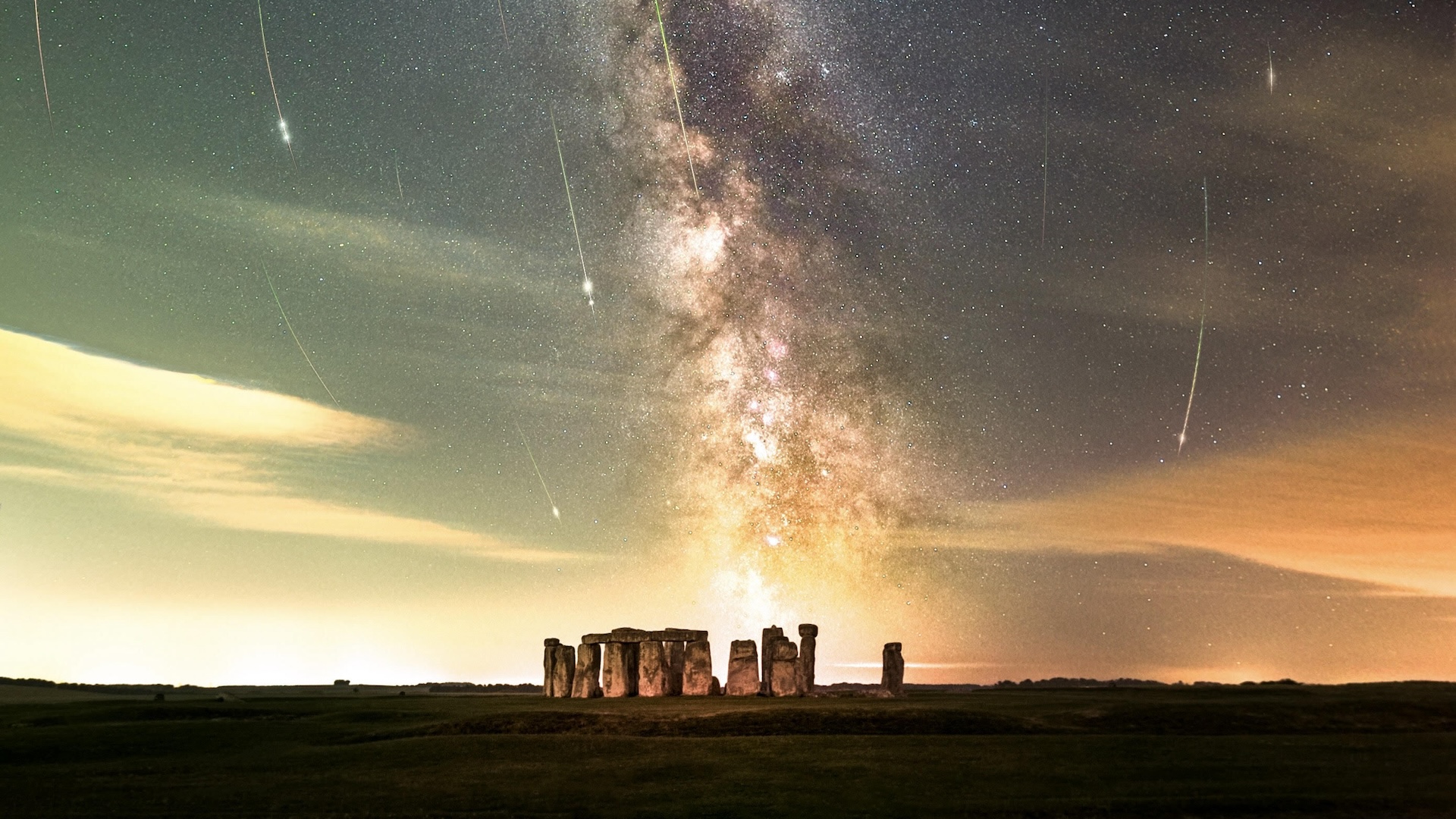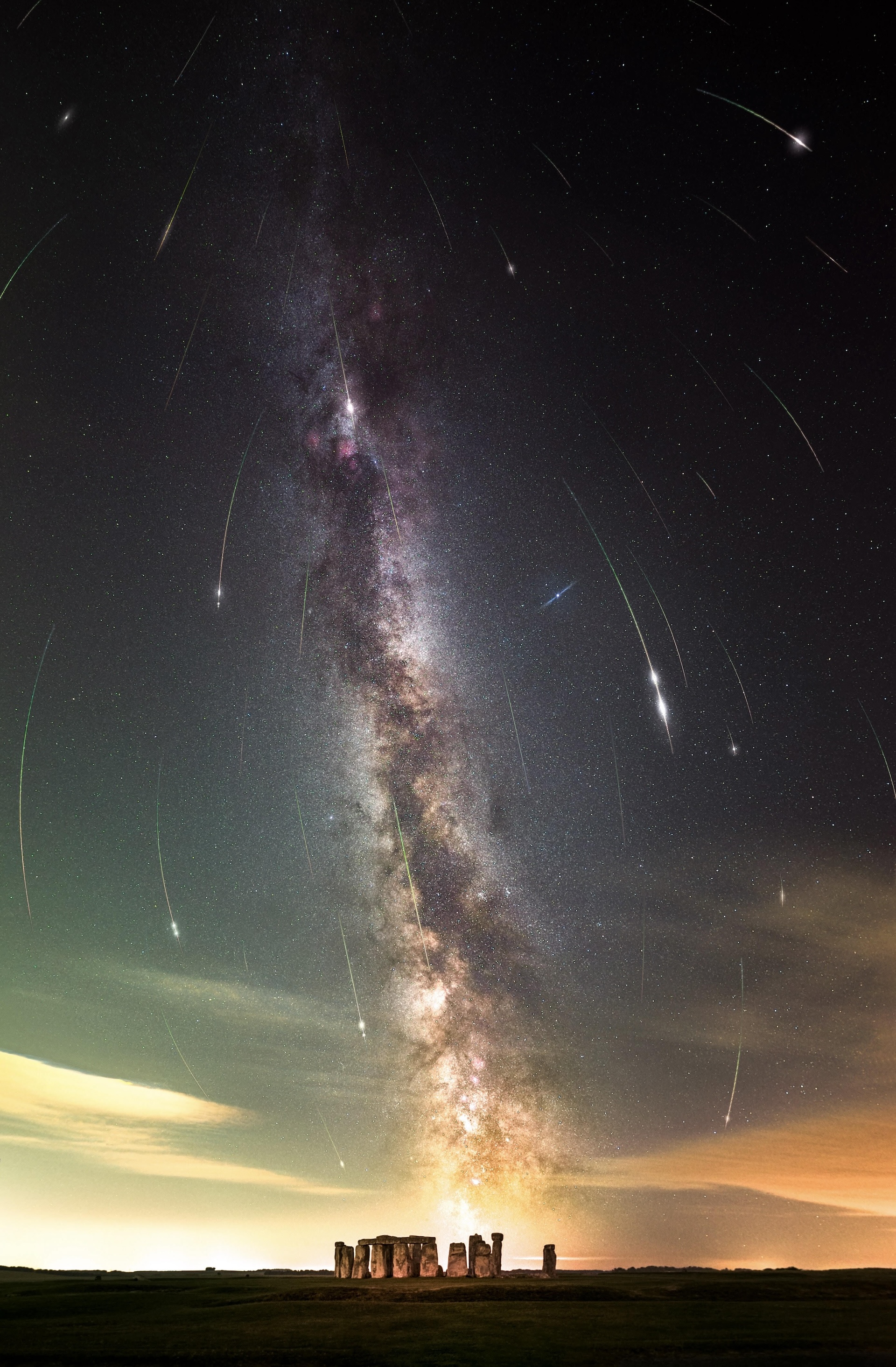
The Perseids, one of the year's most prolific meteor showers, peaked this week, raining dozens of "shooting stars" per hour through Earth's skies.
Some lucky stargazers caught a double feature of meteors and dazzling auroras, which were triggered by a spree of powerful solar eruptions earlier in the week. Others, like U.K.-based astrophotographer Josh Dury, hunted for meteors at thematically appropriate locales — namely, the prehistoric astronomical monument Stonehenge in Wiltshire, England.
Stonehenge, built about 5,000 years ago to align with the sun on the summer solstice, is one of the most popular and intriguing astronomical monuments in the world.
To capture his stunning composite image of Perseid meteors streaking over the famous stones, Dury snapped photos from the monument grounds for three and a half hours. He then combined 43 individual exposures of shooting stars with a deep image of the background sky, where the central band of the Milky Way slashes toward the horizon.
"The Perseids have been a part of my life since I was a youngster at the age of seven-years old when I first began my journey in the world of Astonomy," Dury told Live Science in an email. "For me, they are one of the most magical, anticipating events of the astronomical calendar. Seeing meteors [conjures] images of dreams and it is that mysticism I wished to portray through this image."

Dury's image was taken on the night of Aug. 9, and was featured as NASA's astronomy picture of the day on Aug. 12. If you're interested in capturing the beauty of the night sky, check out our guide to the best astrophotography cameras for beginners and seasoned photographers alike.
Related: Stunning 'parade of planets' image shows 6 worlds aligned over Earth
So-called shooting stars are not really stars but tiny bits of rock plunging through Earth's atmosphere at more than 130,000 mph (210,000 km/h). This blazing-fast descent causes the rocks to heat up and release energy as light. Annual meteor showers like the Perseids occur when Earth moves through a dense cloud of rocky debris left in our planet's path by a comet. The comet responsible for the Perseids is 109P/Swift-Tuttle, which last zoomed through the inner solar system in 1992 and won't return until 2126.
Meteor showers get their names from the point in the sky where their shooting stars appear to originate — also known as the radiant. For the Perseids, that radiant is the constellation Perseus (just out of frame at the top of this image). Although the meteors in this picture appear to move on curved paths, that's a trick of Dury's wide-angle lens; each meteor is actually falling in a straight line away from Perseus.
The Perseids appear every year between roughly July 14 and Sept. 1. This year's peak occurred between Aug. 12 and Aug. 13. However, meteors will still be visible tumbling away from Perseus every night until the shower's end.







